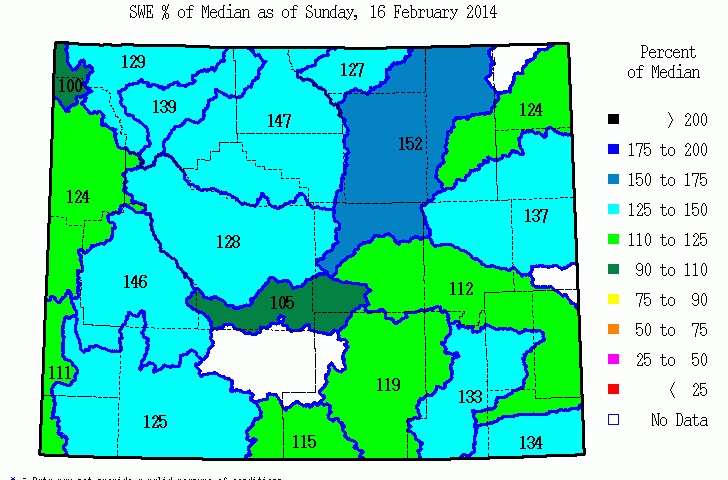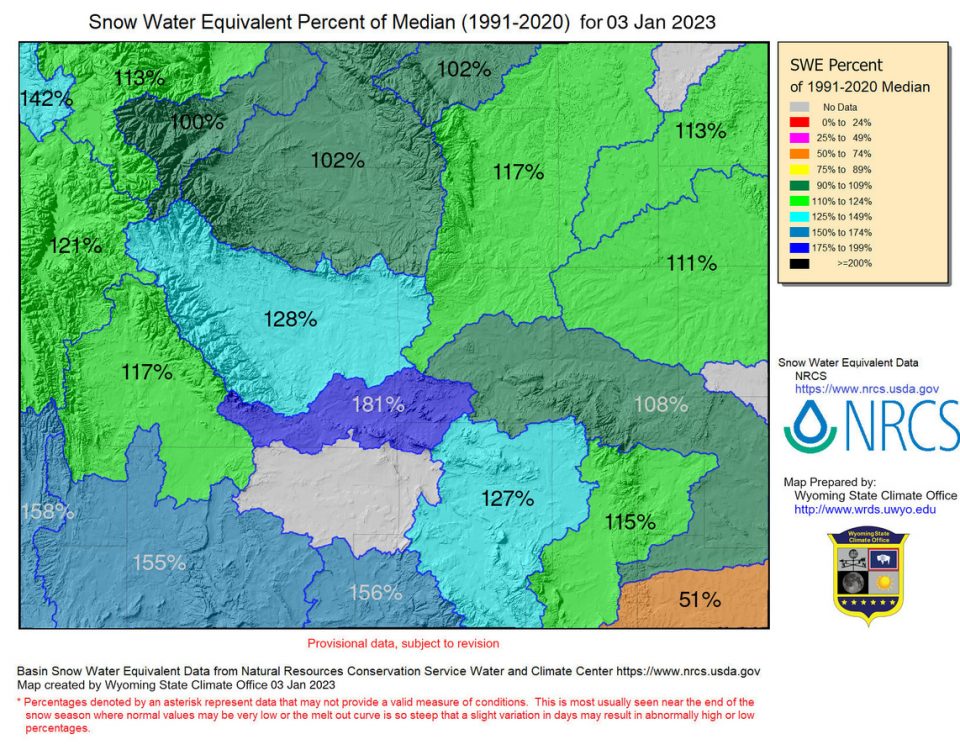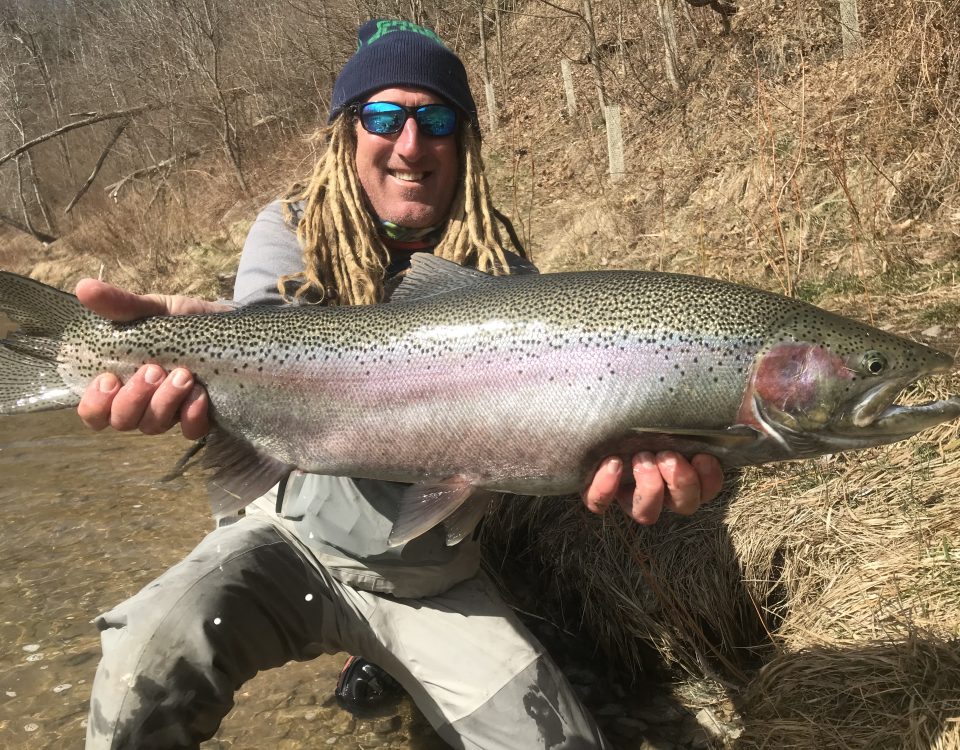Wyoming Snowpack

Reel Deal Anglers
February 13, 2014
Jackson Hole Wildlife
February 24, 2014
2.16.14
With our recent storms the Wyoming Snowpack has increased significantly which means we’re definitely headed in the right direction for great water flows this season. The fishing should be epic given these conditions this season! We’re currently on a booking bonanza so please contact us to reserve your slots today. Please see the article below for detailed information;
Snowpack firms up
POSTED: SATURDAY, FEBRUARY 15, 2014 12:15 AM
By Mike Koshmrl Jackson Hole Daily | 0 comments
The heavy, wet snow that accumulated in and around Jackson Hole this week has pushed the area’s snowpack well above normal for this point in the winter.
Three weeks ago, automated gauges that measure the weight — and thus the water content — of snow throughout the Snake River basin were running in line with the norm.
As of Friday, the same gauges weighed a snowpack that was 118 percent of average.
Particularly dense snows Wednesday made up a significant chunk of the difference, said Mike Beus, water operations manager for the Bureau of Reclamation’s Upper Snake River field office.
“We gained 5 percent on Wednesday and another 2 percent since then,” Beus said Friday. “We’ve increased 10 percent in a week, and we got that year-to-date precipitation really close to normal.”
Between 1.4 and 1.8 inches of “snow water equivalent” was added to the snowpack in higher-elevation SNOTEL sites Wednesday, according to U.S. Department of Agriculture’s National Water and Climate Center. While heavy, moisture-laden snow isn’t the favorite of skiers and snowboarders, it’s a boon for water managers like Beus hoping for full reservoirs.
Going into winter, Palisades Reservoir and Jackson Lake had well below-average levels.
A 120 percent of average snowpack, Beus said, is “just about right where we’d like to be come April 1.”
A 100 percent average snowpack wouldn’t bode quite as well for the water year, Beus said, and 140 percent would mean a high risk of flooding.
“At that point, the tributary flows are likely to push us beyond banks through Wilson,” Beus said.
The National Oceanic and Atmospheric Administration’s long-term drought monitors have Teton County in a “abnormally dry” or “moderate drought” state. Reservoir levels have reflected the dryness. The University of Wyoming’s surface water supply index places most of Teton County in a similar “mild drought” to “moderate drought” condition.
Barring a dry March, Jackson Hole will end the season with an average or better snowpack, Beus said.
“We only need a 67 percent rate of precipitation to meet our average snow water equivalent,” he said.
Even with a solid snowpack and good runoff, a full Palisades Reservoir could bottom out again come fall.
Palisades has been as low as 5 percent capacity at times this winter. The average winter level in the reservoir since the early 1980s is more than 40 percent of capacity.
High demand from agriculture downstream is largely responsible for the low levels.
“I think the future is there’s a high irrigation demand,” Beus said.
A switch to thirstier crops like corn and alfalfa to feed a growing dairy industry drives the demand, he said.





